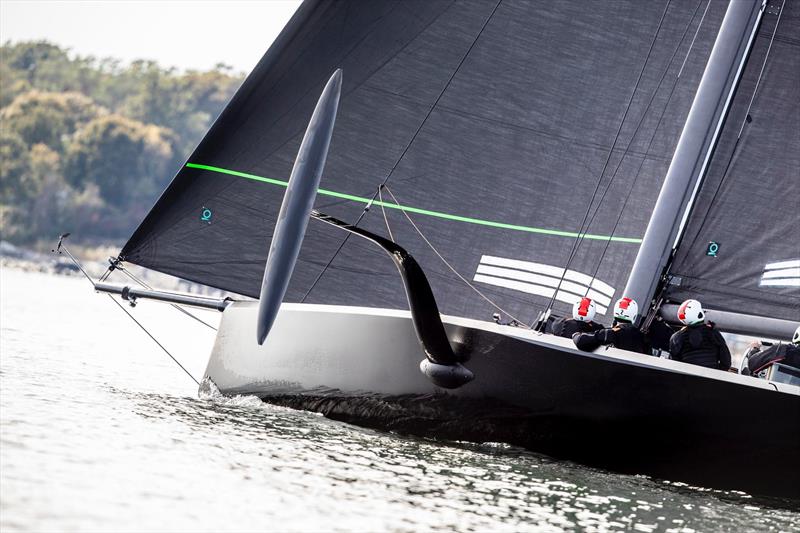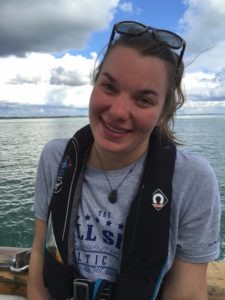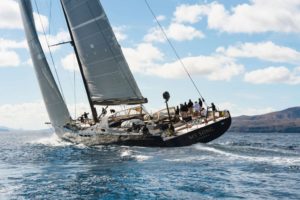How many Challengers will toss their hats in the ring for the 36th America’s Cup?


© Emirates Team New Zealand
While the international sailing media has rightly been focusing on offshore sailing for the past few weeks, given the action-packed, once-per-quadrennial Route du Rhum, the RORC’s Transatlantic Race and the Golden Globe Race 2018, movement has also been afoot in sailing’s grandest event, the America’s Cup. Last year, Emirates Team New Zealand won the 35th America’s Cup in convincing style and with impressive racecourse results. This win granted the Defender (the Royal New Zealand Yacht Squadron) the right to work with the Challenger of Record (the Circolo Della Vela Sicilia) to create the Protocol that will govern racing for the 36th America’s Cup, which will unfurl on the waters off of Auckland, New Zealand, from March 6 to March 21, 2021.
As per this Protocol, teams wishing to contest “AC36” had two entry deadlines. The first, which ran from January 1 to June 30, 2018, saw three challengers — American Magic, Luna Rossa and INEOS Team UK — submit their proper paperwork, while a second “drop deadline” of November 30, 2018 was established to allow straggler teams to get organised and raise the additional $1,000,000 USD in late-entry penalty fees.
According to www.americascup.com, AC36’s event organisers have received an additional eight late-hour challenges from different international syndicates, however it’s important to note that these challenges have not all been accepted. Moreover, of these eight, seven entries are “conditional challenges”, meaning that parts of the Protocol would have to be amended in order to accept these challenges.
“We are really encouraged by the level of interest that has been shown from around the world by the number of notices of challenge that have been lodged by today’s deadline,” said Emirates Team New Zealand CEO Grant Dalton, in an interview on the official Cup webpage.

“It has been a long time coming, but worthwhile to give potential teams every opportunity to enter what will be a huge global event for New Zealand,” continued Dalton. “However, we must remain cautious and not jump to conclusions on the final number of teams. It is only when the acceptance process has been completed that we will know how many will compete in the Prada Cup alongside Luna Rossa, American Magic and INEOS Team UK.”
“To give some context, an example is where we might have a challenge that is conditional on there being an America’s Cup World Series event in that specific challenger’s country,” continued Dalton. “This, obviously, is something that cannot be determined today and also needs agreement with the Challenger of Record.”

It’s important to note that, while the interest level in Cup racing appears higher than it’s been in several Cup cycles (perhaps dating even as far back as the spring of 2007 when AC32 unfurled on the waters off Valencia, Spain), physics still apply: in this case, berthing space. A total of five challengers can be accommodated on Wynyard Point (read: Challengers row), so it will be interesting to see what teams will actually be in Auckland come March of 2021.
Likewise, it will also be interesting to see when teams actually begin sailing their Cup yachts and what pre-Cup regattas actually unfurl, given the emerging reports from New Zealand-based journalist Peter Montgomery that additional design work is needed to ensure that the hydrofoils are strong enough to support the loads that the 75-foot monohulls will be placing on these critical appendages.

Meanwhile, in those offshore sailing circles that we previously mentioned, skipper Giovanni Soldini (ITL) and his crew aboard his Multi 70 Maserati took multihull line honours in the RORC Transatlantic Race, besting Peter Cunningham’s MOD70 PowerPlay by 46 minutes.
“We are happy as it was a very, very nice race,” said Soldini in an official RORC press release. “It was very tight and just fantastic to be with PowerPlay in the ocean for so many days; and so close together. It was really exciting for us. We learnt a lot about our boat and also from PowerPlay. In the beginning, they were racing much deeper than us. We studied their strategy and it was really interesting.”

“We shall look forward to the RORC Caribbean 600 in February as there will be three [trimarans] competing against each, and that will be just fantastic,” continued Soldini.
Finally, in the singlehanded Golden Globe Race 2018, Dutch skipper Mark Slats, sailing aboard his Rustler 36 Ohpen Maverick, rounded Cape Horn on December 2, some eight days astern of race leader Jean-Luc Van Den Heede (FRA), who is also sailing aboard a Rustler 36 called Matmut, albeit one with significant rig damage, which is forcing the 73-year-old offshore veteran to sail far more conservatively than he’d like.

As of this writing, Van Den Heede still enjoys a lead of 1,020 miles over Slats, who needs to consistently sail 0.75 knots faster than the race leader to claim top honors in this highly grueling race. And, with 5,659 miles still separating Matmut’s bow from the Les Sables d’Olonne finishing line, both skippers will have ample opportunity to ponder their boatspeed and remaining miles as they sail towards France and their first real and consistently level horizon since July 1.
May the four winds blow you safely home.
Story by David Schmidt, Sail-World.com North American Editor










